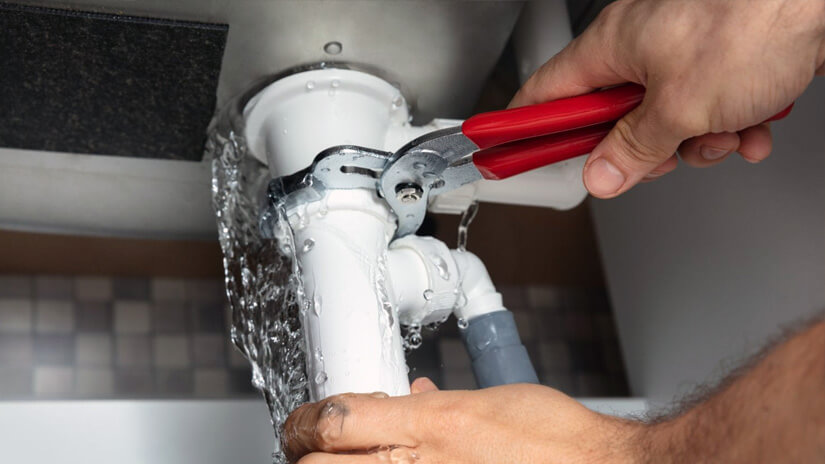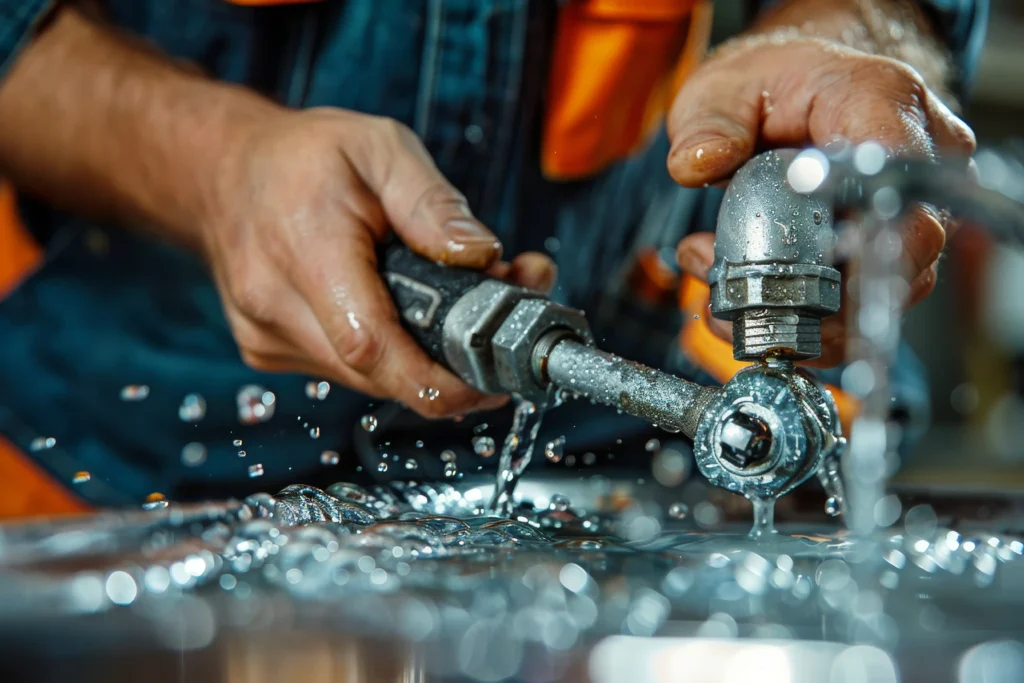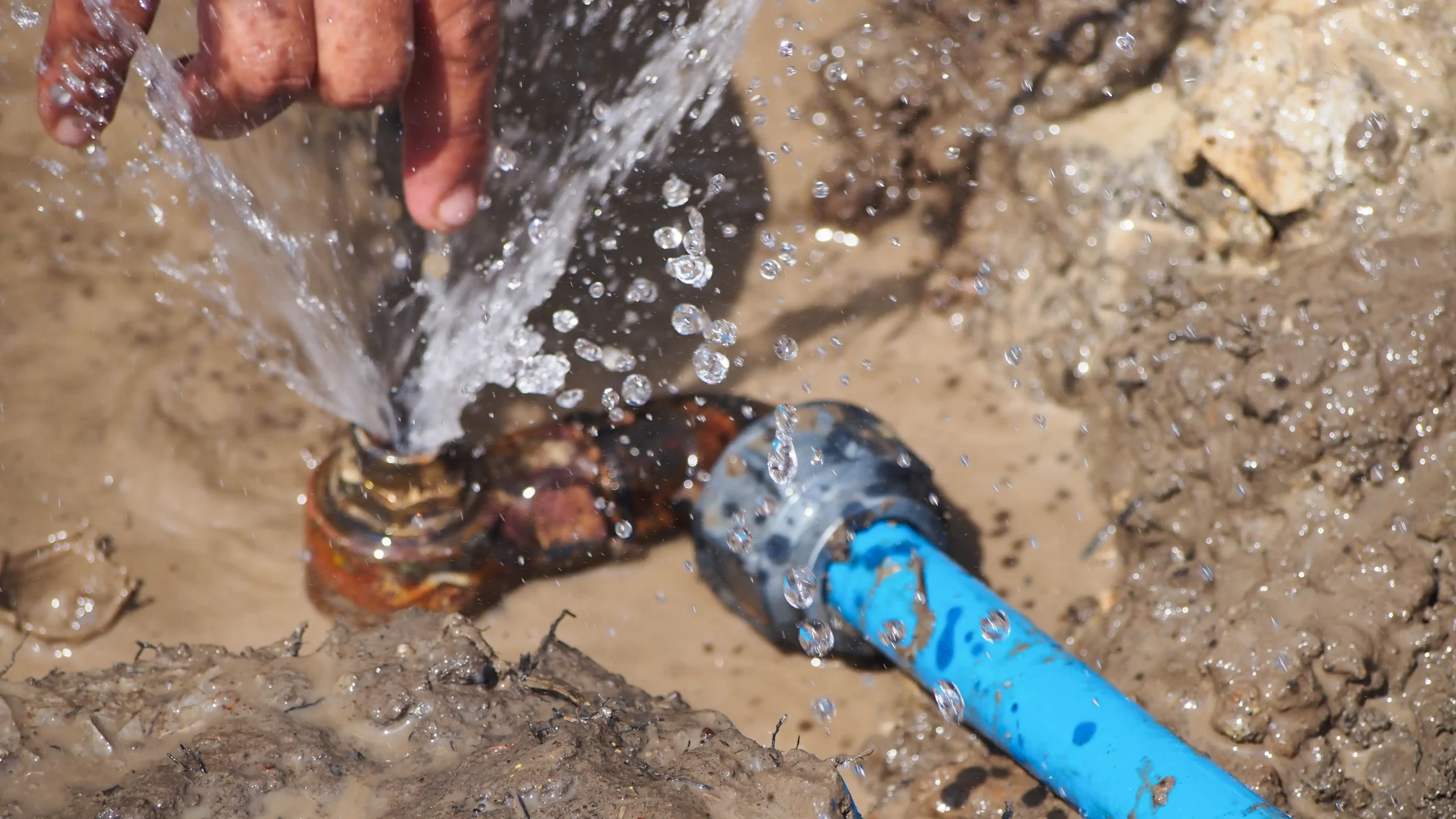Burst Pipe Repairs in Orange can be a homeowner’s worst nightmare, especially when a cold snap hits. Winter nights in Orange, NSW, often see temperatures drop to around 0°C (32°F), which means any uninsulated water in pipes can freeze and expand. When ice forms inside a pipe, it pushes water and pressure against the weak spots in the plumbing until – pop – the pipe bursts. A sudden flood of water can damage walls, ceilings and floors in no time, so staying calm and acting fast is the key. In this friendly, step-by-step guide, we’ll walk you through exactly what to do if a pipe bursts in your Orange home: from shutting off the water to dealing with plumbers and insurance. We’ll mix in some clever Aussie insights and plain-English tips to keep you informed and in control.
Why Pipes Burst (and Why It Matters in Orange)
Nobody likes unexpected home repair drama. Pipes can burst for several reasons, and understanding these helps you both prevent and respond to problems. In Orange’s cool climate, frozen water is a big culprit. When water inside a pipe freezes, it expands and increases pressure until the pipe can’t hold it. This often happens in unheated spaces (like a laundry or garage), or in exterior walls exposed to frost. Other causes include high water pressure (even 10% above normal can stress pipes), rust and corrosion in old metal pipes, and even tree roots growing into underground lines. Slow leaks or clogs can also raise pressure and eventually lead to a rupture.
The fallout from a burst pipe can be serious: water flooding a room, ruined carpets and possessions, and costly repairs. In Orange’s winter, a burst pipe might come as quite a surprise – one minute you’re heating up the living room, the next there’s water dripping through the ceiling. The good news is, most pipes aren’t very deep underground in homes, and quick action (and a call to a plumber) can limit the damage. Recognizing the warning signs is also useful: you might notice a sudden puddle on the floor, a loud bang or hissing from the plumbing, or discolored water coming from the tap. Pay attention to any of these, and you can prevent a big problem from getting worse.

Burst Pipe Repairs in Orange: Step-by-Step Guide
When a pipe bursts, step 1 is to stop the water. Find your main water shut-off valve and close it right away. In many NSW homes this is under the kitchen sink or next to the water meter (often at the street boundary). Turn the valve clockwise (or flip a lever 90°) until it stops – this will stop water flooding into your home. If you have any doubts, calling your water provider or checking the meter box may help locate it, but most homes have a clearly labeled “stop cock.” Once the flow is cut, open a nearby faucet or two (especially the lowest one in the house) to drain excess pressure and water from the system.
- Contain the leak and unplug electronics. With water flow stopped, use towels, buckets or a wet/dry vacuum to soak up pooling water and keep the area as dry as possible. Move furniture or rugs out of harm’s way. If the burst is near electrical sockets or appliances, turn off power to that area at the switchboard to avoid shock. Water and electricity together are dangerous, so err on the side of caution – it might be wise to switch off power to the flooded zone and call an electrician if there’s any doubt.
- Call an emergency plumber. As soon as you’ve stabilized the situation, call a licensed plumber – preferably an emergency or 24/7 service. Plumbers have the experience and tools to inspect and fix burst pipes safely. Many plumbing experts strongly advise leaving complex repairs to them: “Call in the plumbers for inspection, diagnosis, and restoration” rather than attempting a quick fix yourself. In Orange, there are local plumbing companies offering 24/7 emergency service. Explain the situation clearly (burst pipe, location, any damage) so they can come prepared. Keep in mind that after-hours or emergency calls can be more expensive, but it’s usually worth it to prevent extensive water damage.
- Temporary patch (if you’re handy). While waiting for the plumber, you might try a very temporary fix if the leak is small and you have the right supplies. For example, rubber pipe repair tape or a hose clamp can slow a leak a bit. Some DIYers cut out the broken section and use a push-fit connector (like a SharkBite) to bridge the gap. The HGTV plumbing guide notes that for a small hole, you can “cut the pipe to remove the damaged area and install a push-to-connect fitting”. If you do attempt a patch, be very careful and only do it if it safely slows the leak until the plumber arrives – but don’t delay calling the pro. Even a patched pipe should be properly checked and re-sealed by a plumber.
- Clear drains and debris. To prevent clogging and to make cleanup easier, keep all nearby drains open (flush toilets, run taps) so that drained water has somewhere to go. Use blankets or absorbent cloths to catch any continued dripping. Remember, even after shutting off the main valve, some water will still come out when you open taps – that’s just draining the lines. Cleaning up as much water as possible now (using towels or a shop vacuum) will reduce the risk of mould and structural damage.
- Document the damage. If you have insurance, it’s wise to take photos or video of the burst pipe and any water damage right away. This documentation will help if you need to make a claim (see FAQ below). Note the date/time, and write down what you did (who you called, steps taken). Keep receipts for any emergency purchases (e.g., towels, a new water heater, or plumber fees). Even if everything turns out fine, having a record of the incident is good practice.
- Let the plumber do the repair. When the licensed plumber arrives, they’ll first confirm that the water is off, then locate the exact break. They may remove a bit of wall or insulation to get to hidden pipes. Most often, repairing a burst section involves cutting out the damaged pipe and splicing in a new piece. Modern plumbers often use compression couplings or push-fit fittings to join the new pipe (no torch needed). For copper pipes, they might solder or use a threaded fitting. As the HGTV guide suggests, after cutting out the bad bit, “the push-to-connect fitting reconnects both ends of the pipe, bridging the burst area”. The plumber will also check for multiple leaks (sometimes one burst can indicate others nearby) and may use a camera to inspect if needed. Trust them to securely patch or replace that section.
- Drying out and restoration. Once the pipe is fixed, your focus shifts to drying and restoring. Open windows and use fans or dehumidifiers to dry walls and floors (water seeps in fast). A professional restoration service might be necessary if ceilings or insulation got wet. They can clean up mud, remove ruined drywall, and use drying equipment. Your plumber or insurer may suggest a water-damage restoration specialist. If ceilings or floors were cut open, you’ll likely need new plasterboard and paint, or tiles re-set. This is where costs can add up – see the table below for typical repair ranges. Take it slow: don’t cover damp areas too early, and watch for mould growth for the next few weeks.
*Note: Exact prices vary. A Sydney plumbing site notes that a straightforward burst pipe repair can be about $150–$250, but after-hours calls or fixing pipes inside brick walls can raise labour and restoration costs. Always get a quote and ask about any extra fees (e.g. disposal, water damage cleanup).
Insurance and Costs
Dealing with burst pipes isn’t just about plumbing — it can affect your wallet too. In Australia, most home and landlord insurance policies do cover sudden burst pipe damage (the resulting water in walls, floors and contents) as long as it wasn’t caused by negligence. For example, if a pipe “cracks abruptly and spills water” suddenly, your insurer will typically pick up the tab for damage. However, insurers also expect you to have taken reasonable care of your property. Frozen pipes can be tricky: insurance may cover them if you can show you tried to keep pipes warm, but some providers view a frozen burst as preventable and may deny a claim if they think you didn’t maintain a minimum temperature. In practice, that means always follow the preventative tips (insulate pipes, use heating, etc. – see below) to stay covered.
If you do need to claim, file it ASAP. Document everything (photos, plumber’s report, invoices) and emphasize the sudden nature of the burst. Remember: while the water damage to your home and belongings is usually covered, the policy might not pay to replace the damaged pipe itself – that repair cost is often your responsibility. So keep the broken pipe as evidence if needed, and ask your plumber for a clear invoice that splits repair versus damage claims. Check with the Insurance Council of Australia for more details on coverage.

Tools & Materials Every Homeowner Should Have for Emergency Pipe Leaks
Let’s be honest—when a pipe bursts, the last thing you want is to be scrambling for a bucket and some prayers. Having a few basic tools on hand can save you time, damage, and even a little dignity.
Here’s a quick checklist every Orange homeowner should consider keeping handy:
| Tool/Item | Why You Need It |
| Pipe repair tape | Seals small cracks temporarily until help arrives. |
| Adjustable wrench | Helps turn off the water at the mains if needed. |
| Buckets & towels | Prevent water from spreading further. |
| Torch or headlamp | Burst pipes often happen in hard-to-see places. |
| Plumber’s contact | Store in your phone or on the fridge for quick access. |
Don’t aim to DIY the repair, but these tools can buy you precious time before the plumber gets there. Trust me, future-you will thank you.
Ready for Anything
Dealing with a burst pipe in Orange doesn’t have to leave you panicking or out of pocket – if you know the drill. Start by quickly shutting off the water supply and power to the affected area, then call a licensed plumber for help. Clean up as much water as you can and document the damage. With a calm approach (and a sensible dose of Aussie gumption), you can mitigate damage and prevent future bursts. Keep in mind: pipe bursts are common in winter, but fast action saves thousands in repairs and headache.
If you ever face a burst pipe emergency, use this guide as your checklist. Inspect your home’s main valves now (so you’re not scrambling later), and know who to call for an emergency fix. Stay safe, Orange – you’ve got this! For peace of mind, burst pipe repairs in Orange are best handled with prep and speed. Locate your home’s main valve today and keep a trustworthy local plumber’s number handy.
FAQs
Q1: What’s the first thing I should do if I notice a burst pipe?
The first step is to shut off your main water supply immediately to stop flooding. Next, switch off electricity if water is near outlets. Then call a licensed plumber in Orange. Acting fast reduces water damage, repair costs, and even mould risks.
Q2: How long does it take to repair a burst pipe in Orange?
Most burst pipe repairs can be completed within 2 to 4 hours, depending on access and the extent of the damage. However, if the pipe is behind walls or in concrete, it may take longer due to cutting, replacement, and surface restoration time.
Q3: Are burst pipes covered under home insurance in Orange?
A: Yes—most home insurance policies in Orange cover water damage caused by sudden pipe bursts. However, the actual pipe repair might not be included. Always check your policy wording and document all damage with photos and invoices before claiming.

